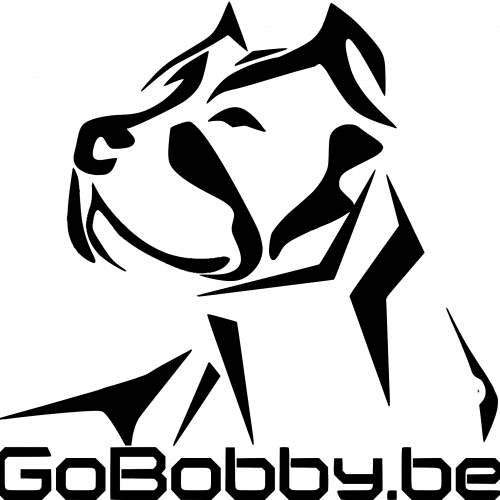
GoBobby TopCoach Workshop
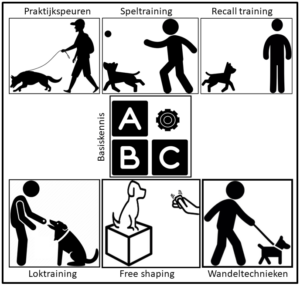
Dog training in general is based on the fact that we make the dog BELIEVE there is a BENEFIT for him!
Who am I?
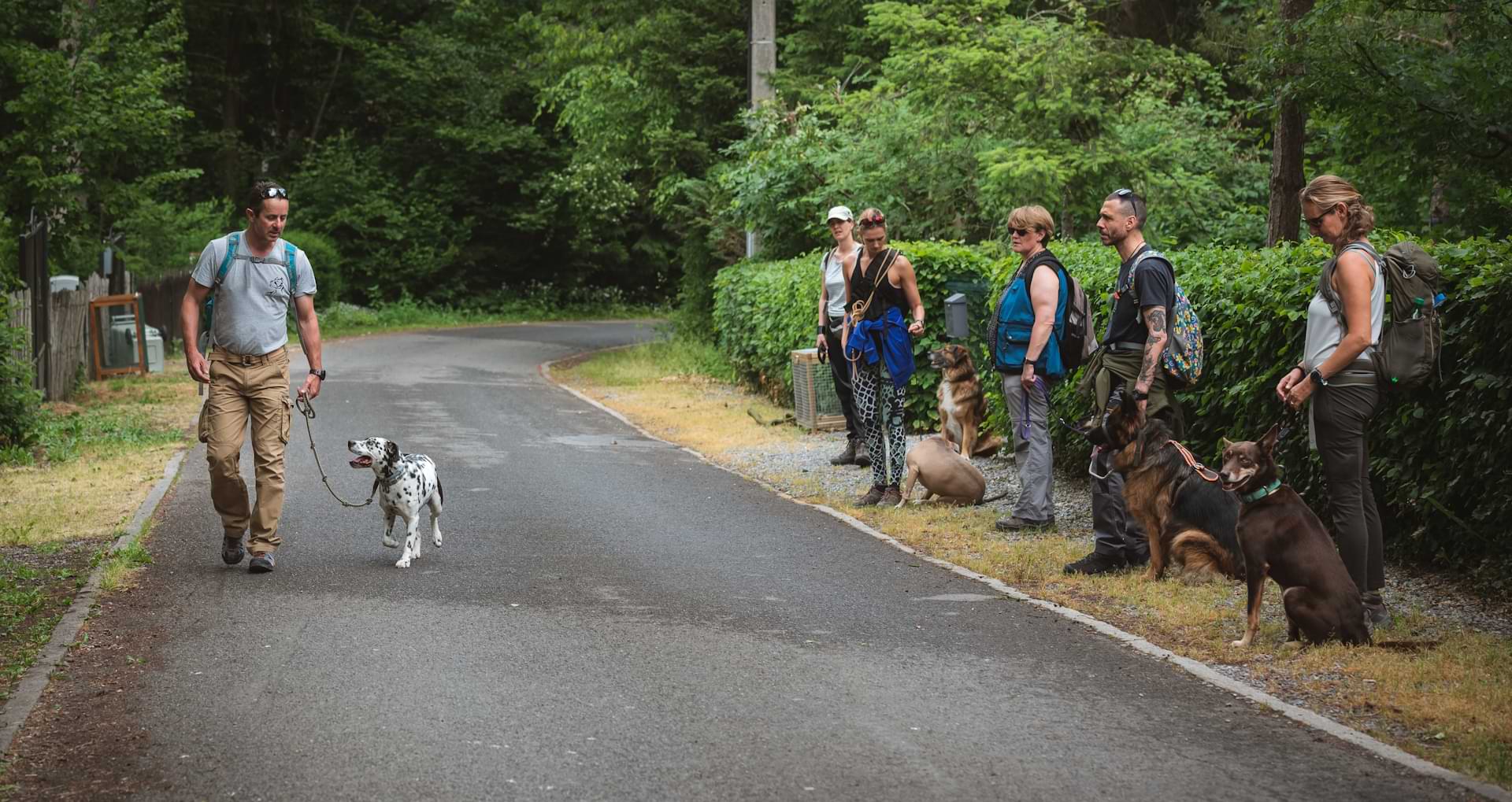
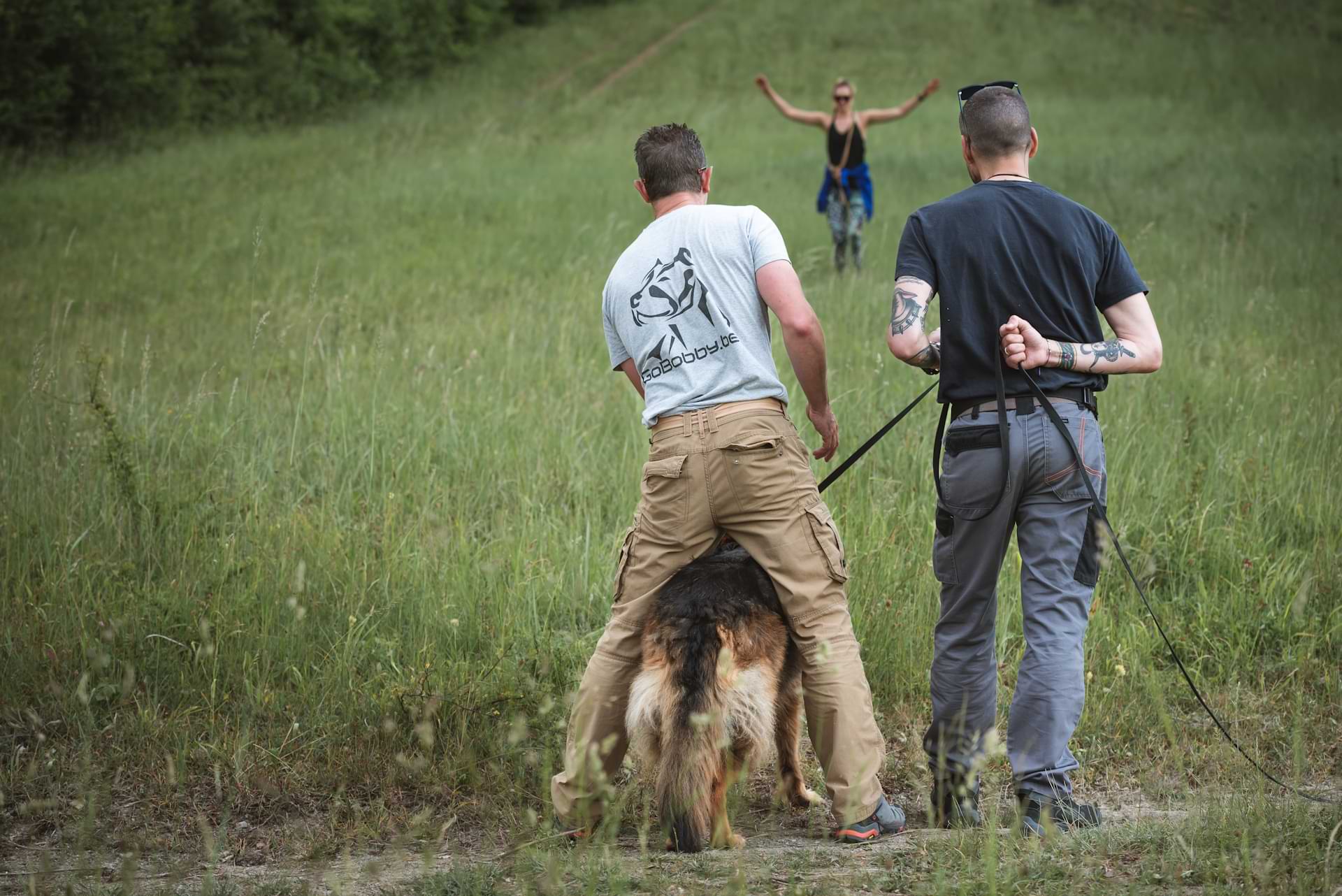
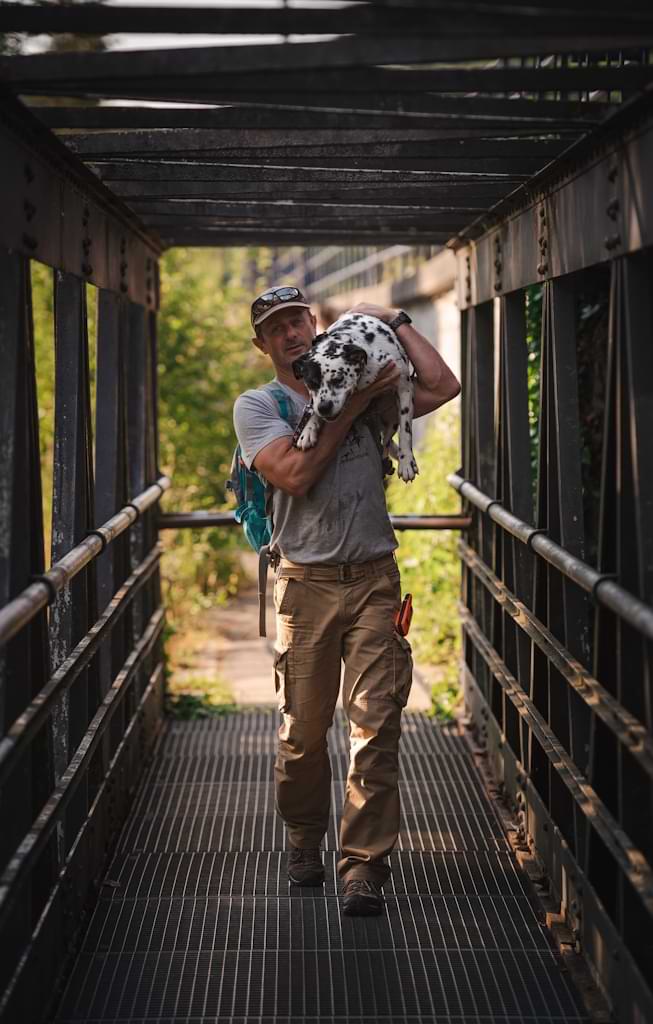
What is GoBobby's 360 Training Protocol?
Gobobby’s 360 Training Protocol is a flexible and active training method where the aim is to create a dog (any dog) that performs its exercises smoothly, with hart and soul. For that we try to:
- create a healthy relationship between the dog and its handler.
- Increase and control the dopamine levels and we can do that by responding to the expectation of being rewarded. This is called dopamine increased training aka casino training.
Through this training protocol we create a framework that provides you with the knowledge to train your dog.
■ What is dopamine? Dopamine reinforces feelings of pleasure by connecting sensations of pleasure to certain behaviors. It is a neurotransmitter, meaning it sends signals from the body to the brain).
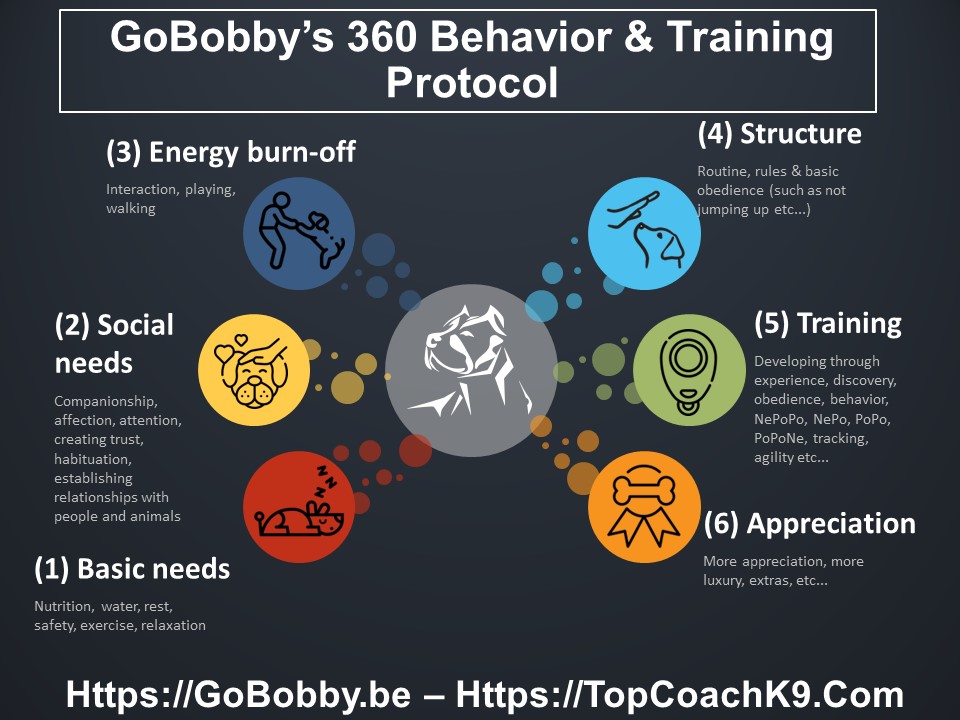
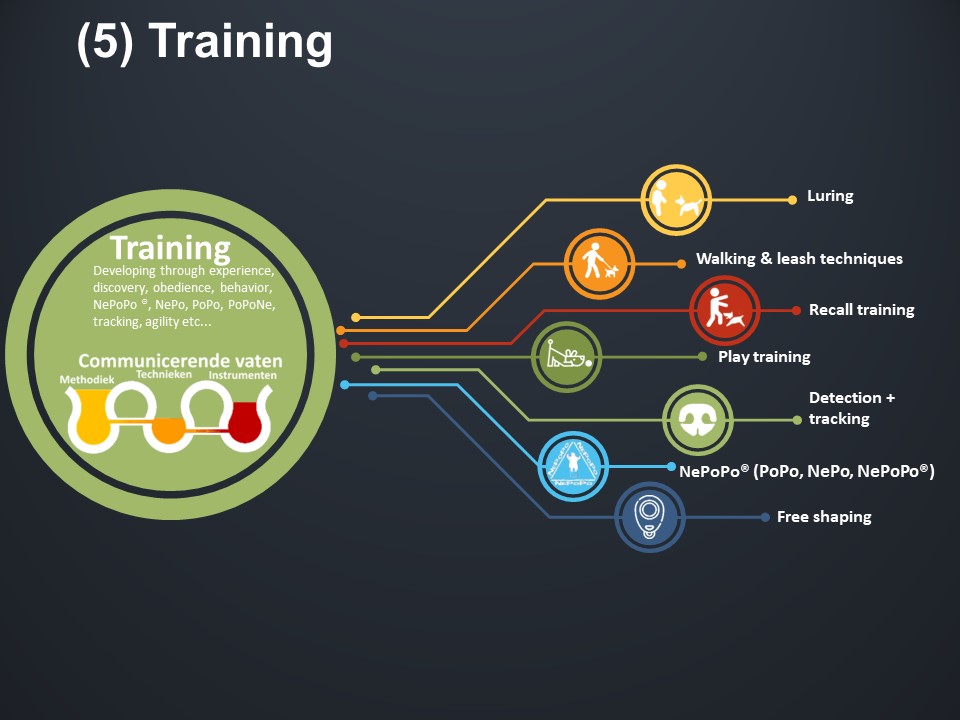
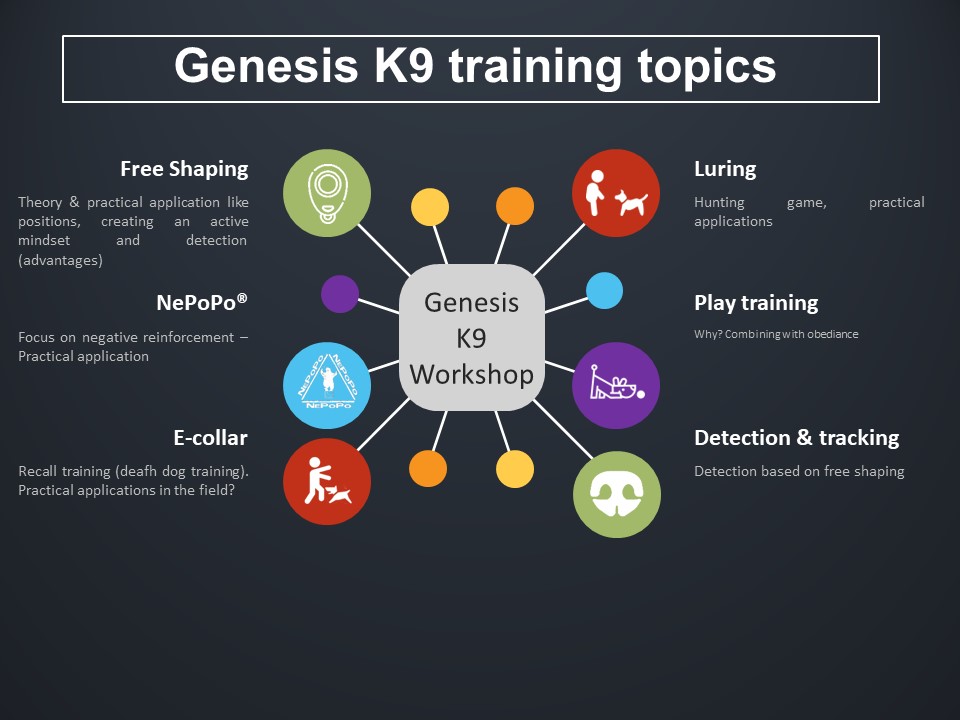
Free shaping
■ Free Shaping
Free Shaping is a scientific name where the intention is to achieve a certain behavior, built on a series of small steps without any intervention from the handler (based on operant conditioning).
The goal is to create an active mindset!
■ What is operant conditioning? Operant conditioning is a method of learning in which behavior is adjusted by consequences.
Practical applications?
- Positions
- Detection
- Apport
- Creating an active mindset
- Creating a mentally strong dog
- Eliminate fears
- Mental fatigue
- Behavior modification
How to start?
■ The Shaping Game
The shaping game is based on operant conditioning and is a game where (in this case) the dog will learn a desired behavior by experience. It is a hot/cold game and it can be used to make a dog more active, learn new behavior like positions, make him less anxious, behavior modification etc…
To play this game, we use a clicker
Why a clicker?
- No emotion, the focus is placed on the correct association of the behavior.
- It means always the same, reward is coming (but how much reward? And what?)
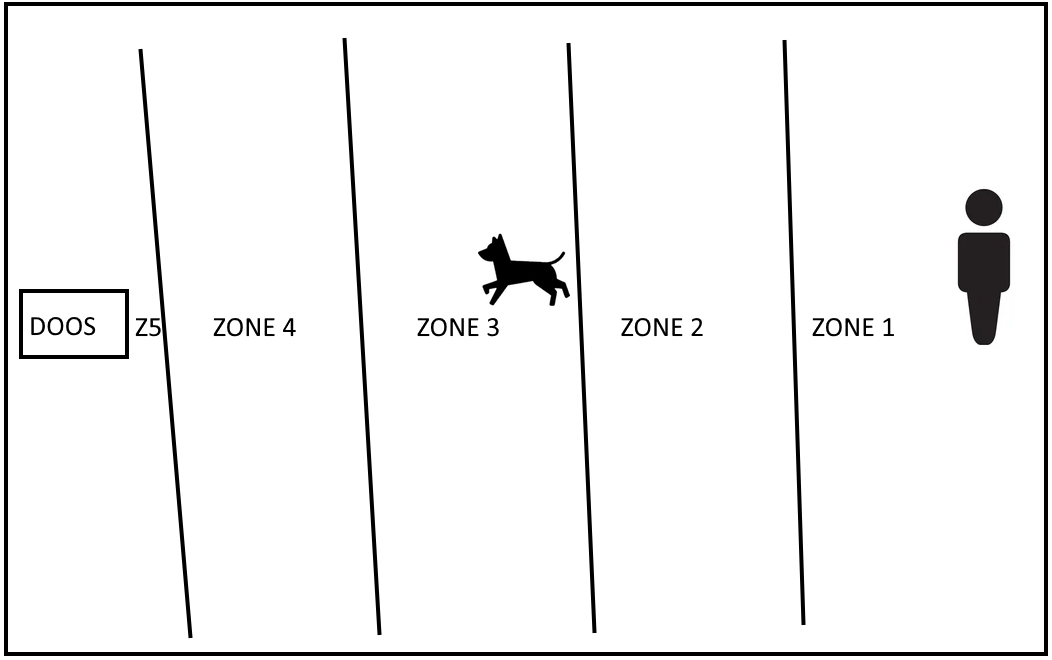
■ Detection based on free shaping
■ Practical exercise about free shaping (with students and dog).
Free shaping exploration zone
Practical cases
behavior modification
Free shaping - creating a mentally strong dog
Free shaping - creating a mentally strong dog
Free shaping - muzzle training
Free shaping - apport
Free shaping - apport
behavior modification
Free shaping - creating a mentally strong dog
behavior modification
Free shaping - Positions
Free shaping - apport
■ Detection based on free shaping
How to start?
Based on free shaping - first session - imprinting
searching with different distractions - NO indication yet
Free run
second sessions - Imprinting
Searching in the environment - NO indication yet
Free run
Indication (Focus instruction)
Focus first step
Focus third step
Focus with Bicky
Focus second step
Focus fourth step
Luring
■ Luring?
This type of training simply involves using a food reward to guide the dog to the desired position or behavior (direct reward) and over time the luring must fade.
Why luring?
Luring is a fast and effective way to teach your dog new positions. It’s easy, it’s an active workout, most dogs like it and you can learn new behavior fairly easily and quickly this way. This is an easy method for quick learning if the dog is food motivated.
Pay attention to the following:
- That your dog does not think for itself in the beginning (but will have to do so later when the food is phased out).
- That you will have to phase out the luring and steering with the food over time (not with shaping).
- That your dog makes associations that may not be wanted.
- That your dog may only work for the food.
■ Practical exercise about luring with a dog.
Luring exploration zone
.
PHASE 1 – Learning phase
- Dojo training
- No naming of the behavior
PHASE 2 – Automatic phase
- Start naming the behavior on execution (when you have the wanted behavior) and later on command
- Still dojo training
PHASE 3 – Generalization phase
- Every behavior on command
- Less to no luring
- Other environments
- No reward with every execution of the command
PHASE 4 – Maintenance phase
- Practice in all environments
- Use a release marker
- No luring at all
- Less rewarding (casino training by all means)
ATTENTION!
“Luring with food/toy” is directing a certain behavior (e.g. “SIT” food goes up until the dog sits down). This is used to learn something new.
“Reward with food/toy” is different from “luring with food” in a way that in “reward with food”, the food is only given when the requested behavior has already been performed.
“Bribe with food/toy” is something you see very regularly. Dogs that know what is expected of them but only do it when the owner shows the food or the toy..
Free shaping vs luring
■ Free shaping vs luring?

What is the best method? That depends of the job the dog will do!
Find your balance!
Casino training
■ Casino training?
Adding “unpredictable reward” increases the “dopamine” hormone!
Why casino training?
Casino training creates a better motivation that lasts longer. We distinguish continue reinforcement and interval reinforcement and on top of that also interval reinforcement with a variable.
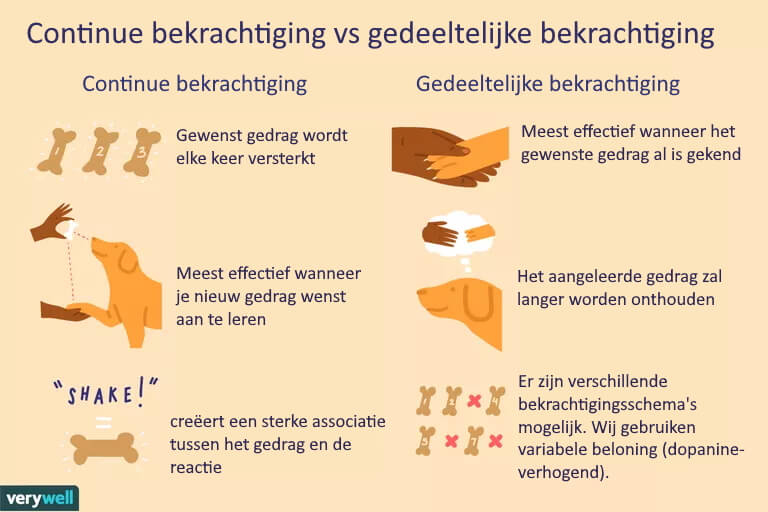
FILM SOPALSKY – Dopamine Jackpot
https://youtu.be/axrywDP9Ii0
Play training
■ Play training?
Through play we work on our relationship & you can combine that with obedience training. Play should be a trade-off where one doesn’t always win over the other. It can be rough and we teach the dog how to control its bite and it creates trust and a strong bond.
Keep in mind that dogs have different drives that can be high or low and can only be partially raised. This means that you cannot turn a low-drive dog into a very high-drive dog however you can tweak it.
2 games:
■ Red light/green light:
■ Train Trough Play:
Attention: Do not become a conflict for your dog, never hide the toy!
■ Tips & Tricks:
- Maybe you can start your training with game, play in between as well (game often increases the drive more than with food).
- During play with a ball or something else, do not remove the object/ball too much or too early, the dog must always have hope that he can catch the ball. That is why you can only move or pull back at the very last moment. There must be a good chance he can take the ball! Nothing wrong with that.
- Throw a ball around during the day, out of the blue!
- Don’t do play sessions for a very long time. Stop at the peak, the dog should actually be a little bit disappointed that it stops.
■ Practical exercise about play and red light/green light.
E-collar training - recall training
■ What is an e-collar?
An E-collar (Electronic collar) is a collar that sends a vibration, electrical stimulation or sound to the dog using a remote control operated by a user/trainer.
■ Recall training with e-collar. Why do we even need an e-collar?
- Freedom: Let your dog enjoy “being a dog by giving him a controlled freedom”! With a high-quality e-collar you can confirm your instructions remotely, giving you more control while walking loose.
- Timing: From a communicative point of view, it is very important to give the validation of your instruction at the right time.
- Distance: The e-collar can be seen as an invisible leash with which we can maintain control even at a greater distance.
- Consistency: By acting consistently you improve communication with your dog which results in less stress and a better relationship.
- Better result: Working correctly with the e-collar ensures that you obtain a more stable result faster.
■ How can you use/introduce an e-collar?
(1) Show stopper (aversive)
(2) Avoidance training (NePo) neg. reinforcement
(3) Contact methode (with an instruction as reinforcer)
(4) Connecting with leash techniques
(5) Shaping (low stim – good contact is necessary)
(6) E-collar as an instruction (deaf dog training or tone/vibration/stim)
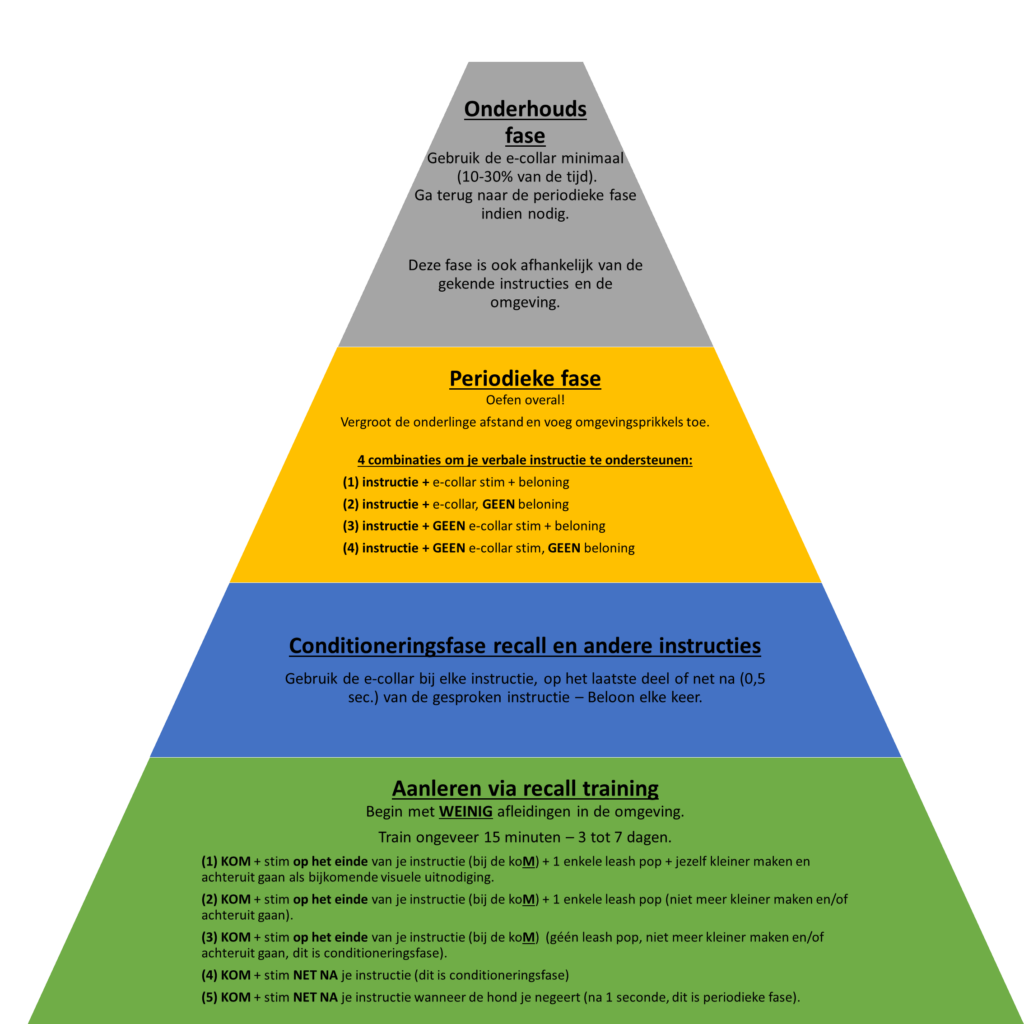
Very important to know is the difference in timing that you have with:
- The reinforcement of an instruction is on the last letter of the word, when the dog knows the requested instruction (contact method – point of no return).
- A correction in obedience is just after giving a known instruction (1 to 2 seconds) when the dog does not carry out the requested instruction. The stimulation of the correction does not have to be higher than in the contact method but CAN be higher.
- Aversion is a higher stimulation that is given when the dog performs highly undesirable behaviour. Aversion can stop one behavior but trigger another! Watch out with people and animals nearby.
Additional information
- Different brands
- How do you change behavior with an e-collar ?
- How do you use the stimulation as a correction? aversive? activator?
■ Practical exercise about e-collar training (recall).
NePoPo®
■ NePoPo®?
NePoPo® is a way of training, a way of living with your dog, a framework and a commercial system.
You can see NePoPo® as a framework that ensures that you can always fall back on a certain knowledge to “train” your dog. The main idea is to create an active mindset in the dog and the goal is to increase dopamine. At GoBobby, the NePoPo® principles largely fit into our way of training, along with other training methods.
Specifically in terms of training, NePoPo® consists of several methodologies to train your dog. These are :
- PoPo training (very positive, you can see that as volunteer work) – reward is giving something, no corrections except stopping the session.
- NePo training (you can see that as forced labor) – reward is the pressure that goes away, must do (avoidance training).
- NePoPo® (you can see that as paid labor) – using the full quadrant (our 360 flowchart), you create a dog with a strong intrinsique motivation for his exercices. Rewards and corrections are possible where a correction does not mean to stop the behavior but do what is asked. Corrections in obediance are not the same as aversives!
Practically, you cannot just use one method, depending on the situation and the dog, you will adjust.
But with having a focus on using an e-collar, NePoPo® is based on negative reinforcement.
Practical applications:
- Unforced forced look
- Unforced forced fetch
- heeling
- activating behavior
- etc…
NePoPo® triangle:

Questions?
Additionally...
■ From zero to hero with Spike
Spike was a border collie who was with me for 3 weeks. Spike was 5 years old, had overweight, was blind on 1 eye and was never really trained in his life. So a real challenge!
With Spike, the only focus was to create an active mindset. The experiment was to see if we could change Spike from zero to hero in 3 weeks using our GoBobby’s 360 Training Protocol.
